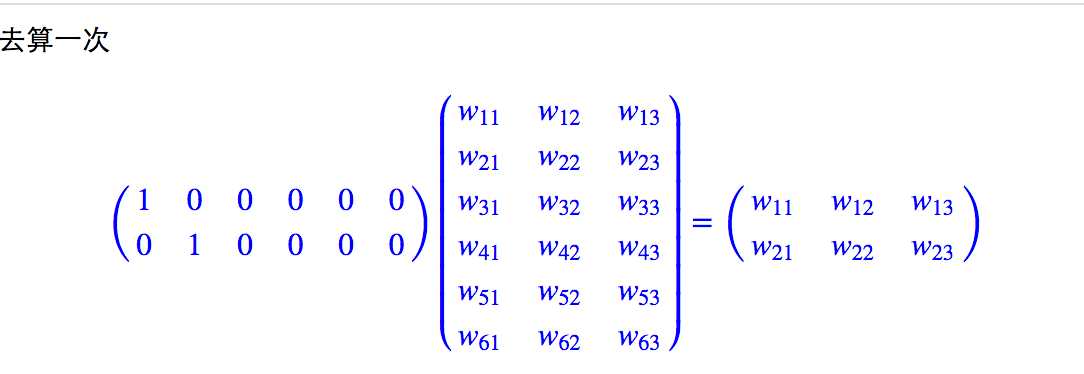标签:ase 分布 one 高效 getting ble inner asc 第一步
url:http://pytorch.org/tutorials/beginner/nlp/word_embeddings_tutorial.html?highlight=lookup
词嵌入是稠密向量,每个都代表了一个单词表里面的一个单词。NLP中每个Feature都是单词,但是怎么在电脑中表示单词呢??
ascii知识告诉我们每个单词是啥,没告诉我们是什么意思。还有就是,怎么融合这些表示呢?
第一步:通过one-hot编码。w=[0,0,1,0,0]。其中1是表示w的独一无二的维度。
但是缺点就是没有语义信息。正交表示就没有语义信息。
"出现在相似位置和相似语境中的单词具有语义相关性!"这就是分布式假设
假设每个维度是代表某种属性(而不是one-hot中每种属性都是一个单词),那么通过在每个维度上各种属性的"调和",
就能够获取一个单词,相似的单词在某几个"属性上"类似,就会在向量空间距离变近。不相似的单词夹角就会很大。
避免了每个维度大量出现0(one-hot的缺陷)
那么问题就来了,每个维度代表什么属性怎么设计,太难了,就让神经网络自己设计,不需要程序员设计了。
为啥不让词嵌入作为模型参数呢??在训练中自己去更新!正是我们做的事情。
但是词嵌入可解释性不强,也就是说,训练出来,每个维度代表什么含义,不清楚。
但结果就是,近义词在潜在语义维度上确实相近,却难以解释。
总而言之,词嵌入是单词的语义解释。是高效的语义信息编码。
当然可以去"embedding"其他任何事情:词性标签,解析树。
特征嵌入的思想是这个领域的核心。
通过PyTorch来进行Embedding。
类似于通过one-hot来对单词进行索引,我们要使用Embedding去给每个单词定义索引。
这是lookup table的关键所在。
这样,embedding被存入|V|*D的矩阵,D是embedding的维度,就比如单词的索引被存入矩阵的第i行。
在下面的代码中,单词到索引的映射是一个叫做word_to_ix的字典。
模块是nn.Embedding,参数是词汇表的size,和嵌入的维度
而且要注意,对于表的索引,使用torch.LongTensor,因为索引是整数,不是浮点数
CONTEXT_SIZE = 2
EMBEDDING_DIM = 10
# We will use Shakespeare Sonnet 2
test_sentence = """When forty winters shall besiege thy brow,
And dig deep trenches in thy beauty‘s field,
Thy youth‘s proud livery so gazed on now,
Will be a totter‘d weed of small worth held:
Then being asked, where all thy beauty lies,
Where all the treasure of thy lusty days;
To say, within thine own deep sunken eyes,
Were an all-eating shame, and thriftless praise.
How much more praise deserv‘d thy beauty‘s use,
If thou couldst answer ‘This fair child of mine
Shall sum my count, and make my old excuse,‘
Proving his beauty by succession thine!
This were to be new made when thou art old,
And see thy blood warm when thou feel‘st it cold.""".split()
# we should tokenize the input, but we will ignore that for now
# build a list of tuples. Each tuple is ([ word_i-2, word_i-1 ], target word)
trigrams = [([test_sentence[i], test_sentence[i + 1]], test_sentence[i + 2])
for i in range(len(test_sentence) - 2)]
# print the first 3, just so you can see what they look like
print(trigrams[:3])
vocab = set(test_sentence)#得到单词的数量,编码的基础
word_to_ix = {word: i for i, word in enumerate(vocab)}#首先对单词进行最简单的编码
class NGramLanguageModeler(nn.Module):
def __init__(self, vocab_size, embedding_dim, context_size):
super(NGramLanguageModeler, self).__init__()
self.embeddings = nn.Embedding(vocab_size, embedding_dim)#其实就是词嵌入矩阵而已
self.linear1 = nn.Linear(context_size * embedding_dim, 128)#由于是利用前面两个词进行预测的,因此需要将得到的单词拼接起来,其实也可以加和,求平均什么的
self.linear2 = nn.Linear(128, vocab_size)#去分类
def forward(self, inputs):
embeds = self.embeddings(inputs).view((1, -1))#通过嵌入矩阵并且合并
out = F.relu(self.linear1(embeds))
out = self.linear2(out)
log_probs = F.log_softmax(out)
return log_probs
losses = []
loss_function = nn.NLLLoss()
model = NGramLanguageModeler(len(vocab), EMBEDDING_DIM, CONTEXT_SIZE)
optimizer = optim.SGD(model.parameters(), lr=0.001)
for epoch in range(10):
total_loss = torch.Tensor([0])
for context, target in trigrams:
# Step 1. Prepare the inputs to be passed to the model (i.e, turn the words
# into integer indices and wrap them in variables)
context_idxs = [word_to_ix[w] for w in context]
context_var = autograd.Variable(torch.LongTensor(context_idxs))
# Step 2. Recall that torch *accumulates* gradients. Before passing in a
# new instance, you need to zero out the gradients from the old
# instance
model.zero_grad()
# Step 3. Run the forward pass, getting log probabilities over next
# words
log_probs = model(context_var)
# Step 4. Compute your loss function. (Again, Torch wants the target
# word wrapped in a variable)
loss = loss_function(log_probs, autograd.Variable(
torch.LongTensor([word_to_ix[target]])))
# Step 5. Do the backward pass and update the gradient
loss.backward()
optimizer.step()
total_loss += loss.data
losses.append(total_loss)
print(losses) # The loss decreased every iteration over the training data!之前还是一直没有搞清词向量的本质,拿捏不定,其实词向量训练的方法很多,但本质的思想是类似的。就是设置一个查询表,也就是词嵌入矩阵。通过这个查询表,将原始稀疏的one-hot编码成稠密向量。而查询表需要通过训练得到,也就是网络中的参数。

那么最终使用的就是这个权重矩阵的每行来表示对应位置的词向量,和原始的索引相乘只是一个查表的操作。
Word Embeddings: Encoding Lexical Semantics(译文)
标签:ase 分布 one 高效 getting ble inner asc 第一步
原文地址:http://www.cnblogs.com/aaronsw/p/7930427.html